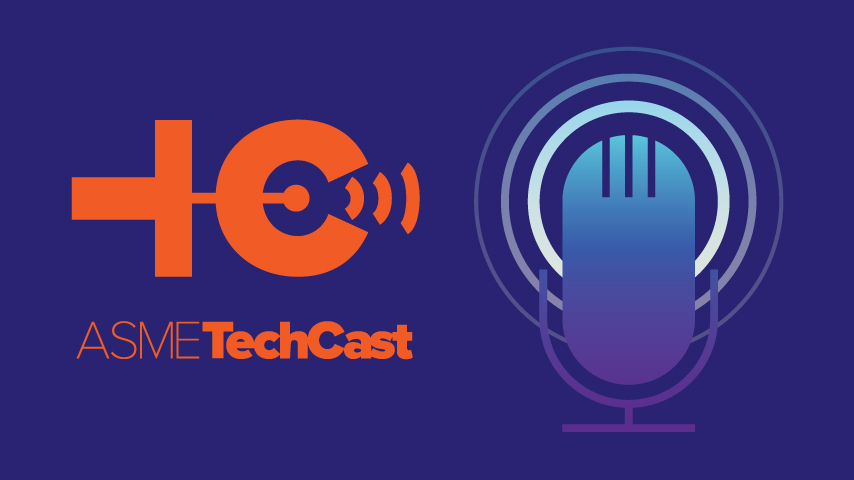Workforce Blog: Engineering the Future Takes All of Us
Workforce Blog: Engineering the Future Takes All of Us


The ASME Foundation is accelerating its work to ensure engineering talent has viable pathways to success.
Not since the dawn of the nuclear age and the U.S.-Soviet space race has the competition for global innovation leadership been as intense as it is right now—and it’s likely to grow ever hotter.
In the last century, the contest was over weaponry and space travel. Today, it unfolds in the realms of clean energy, advanced manufacturing, AI, and biotechnology. What hasn’t changed are the star players: then as now, mechanical engineers are the leadership linchpin.
The primary competitors benefit from talent pools far larger than that of the United States. Consider that India alone graduates more mechanical engineers every year than all the U.S. mechanical engineers working today. The same is true of China.
If the United States has any hope of maintaining its technological leadership, it simply cannot afford to leave any promising technical talent behind. Yet that is exactly what’s happening when so many communities are so dramatically underrepresented in this field.
More for You: When it Comes to Engineers, Demand Exceeds Supply
Through the philanthropic programs funded by the ASME Foundation, ASME is working to correct this imbalance, opening doors of opportunity to those who, for whatever reason, have encountered obstacles to rewarding technical careers.
Four recent examples come to mind, but there are many others.
In the past few years, the ASME Foundation has funded three new scholarships for engineering students, earmarked for men and women of color (the Dr. Gwendolyn Boyd Scholarship), young men of color transferring from community colleges to engineering degree programs (the Dr. Oscar Barton, Jr. Scholarship), and young women pursuing bachelor’s and advanced degrees in engineering (the Costabile Family Scholarship). All merit-based, these and many other scholarships work to lower the financial barriers to an engineering degree.
For the first time in its nearly 150-year history, ASME’s Board of Governors achieved gender parity last year. Unfortunately, the ranks of women leaders across the wider engineering community are alarmingly thin, so the seven women Governors directed the ASME Foundation to establish the Women’s Leadership Collective (WLC). The WLC held its inaugural meeting earlier this year, with more than two dozen mid- to senior-level female engineering executives participating. Their goal is to explore and promulgate strategies for increasing women’s participation at the highest levels of engineering leadership.
Last March on the same day as the WLC’s first meeting, the ASME Foundation hosted its third annual “Reinventing the Future” event in Washington, D.C. These gatherings recognize the extraordinary contributions of engineers from groups that are historically underrepresented in the engineering field. This year, the theme was “Women Engineering Change,” and the event honored five pioneering women leaders who not only model inclusivity in engineering but are working hard to advance it.
Discover the Benefits of ASME Membership
Then in June, ASME and the ASME Foundation hosted our annual “Pride in Engineering” reception, also in Washington, D.C., celebrating engineers who identify as LGBTQ+. While the degree of underrepresentation of this community is harder to pin down, there is no doubting the need to make the engineering field more welcoming to more kinds of people. One of the ways we do that is by offering an engineering scholarship, in partnership with an organization called oSTEM, earmarked for members of the LGBTQ+ community.
The space allotted for this blog is insufficient to itemize all the ways the ASME Foundation is working to make the engineering field more inclusive, and to open pathways to technical careers for the talented, promising, and high-achieving individuals who might otherwise not see a place for themselves as mechanical engineers.
ASME’s philanthropic programs in education, career resources, and support for early innovation are intended to open doors and lower obstacles for every aspiring engineer with the drive and talent to achieve. Because we believe that the stakes are too high and the global competition too stiff to afford the luxury of leaving any promising talent behind.
It really is as simple as that.
Keith Miles is director of major gifts for ASME Programs and Philanthropy and the ASME Foundation. For more on how the ASME Foundation is opening doors of opportunity for next generation engineers, visit www.asmefoundation.org.
In the last century, the contest was over weaponry and space travel. Today, it unfolds in the realms of clean energy, advanced manufacturing, AI, and biotechnology. What hasn’t changed are the star players: then as now, mechanical engineers are the leadership linchpin.
The primary competitors benefit from talent pools far larger than that of the United States. Consider that India alone graduates more mechanical engineers every year than all the U.S. mechanical engineers working today. The same is true of China.
If the United States has any hope of maintaining its technological leadership, it simply cannot afford to leave any promising technical talent behind. Yet that is exactly what’s happening when so many communities are so dramatically underrepresented in this field.
More for You: When it Comes to Engineers, Demand Exceeds Supply
Through the philanthropic programs funded by the ASME Foundation, ASME is working to correct this imbalance, opening doors of opportunity to those who, for whatever reason, have encountered obstacles to rewarding technical careers.
Four recent examples come to mind, but there are many others.
In the past few years, the ASME Foundation has funded three new scholarships for engineering students, earmarked for men and women of color (the Dr. Gwendolyn Boyd Scholarship), young men of color transferring from community colleges to engineering degree programs (the Dr. Oscar Barton, Jr. Scholarship), and young women pursuing bachelor’s and advanced degrees in engineering (the Costabile Family Scholarship). All merit-based, these and many other scholarships work to lower the financial barriers to an engineering degree.
For the first time in its nearly 150-year history, ASME’s Board of Governors achieved gender parity last year. Unfortunately, the ranks of women leaders across the wider engineering community are alarmingly thin, so the seven women Governors directed the ASME Foundation to establish the Women’s Leadership Collective (WLC). The WLC held its inaugural meeting earlier this year, with more than two dozen mid- to senior-level female engineering executives participating. Their goal is to explore and promulgate strategies for increasing women’s participation at the highest levels of engineering leadership.
Last March on the same day as the WLC’s first meeting, the ASME Foundation hosted its third annual “Reinventing the Future” event in Washington, D.C. These gatherings recognize the extraordinary contributions of engineers from groups that are historically underrepresented in the engineering field. This year, the theme was “Women Engineering Change,” and the event honored five pioneering women leaders who not only model inclusivity in engineering but are working hard to advance it.
Discover the Benefits of ASME Membership
Then in June, ASME and the ASME Foundation hosted our annual “Pride in Engineering” reception, also in Washington, D.C., celebrating engineers who identify as LGBTQ+. While the degree of underrepresentation of this community is harder to pin down, there is no doubting the need to make the engineering field more welcoming to more kinds of people. One of the ways we do that is by offering an engineering scholarship, in partnership with an organization called oSTEM, earmarked for members of the LGBTQ+ community.
The space allotted for this blog is insufficient to itemize all the ways the ASME Foundation is working to make the engineering field more inclusive, and to open pathways to technical careers for the talented, promising, and high-achieving individuals who might otherwise not see a place for themselves as mechanical engineers.
ASME’s philanthropic programs in education, career resources, and support for early innovation are intended to open doors and lower obstacles for every aspiring engineer with the drive and talent to achieve. Because we believe that the stakes are too high and the global competition too stiff to afford the luxury of leaving any promising talent behind.
It really is as simple as that.
Keith Miles is director of major gifts for ASME Programs and Philanthropy and the ASME Foundation. For more on how the ASME Foundation is opening doors of opportunity for next generation engineers, visit www.asmefoundation.org.






